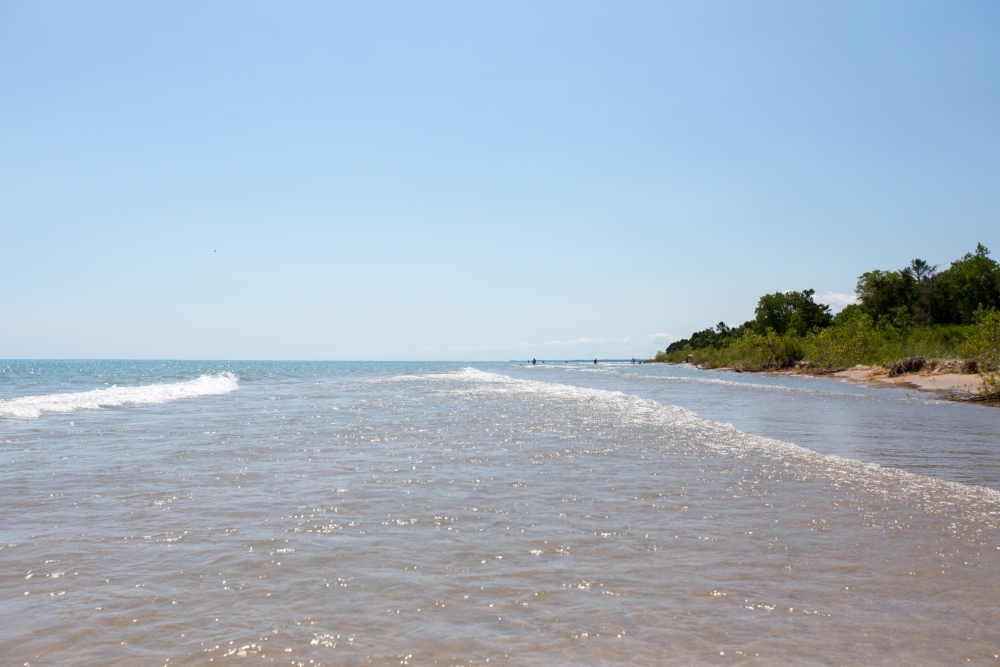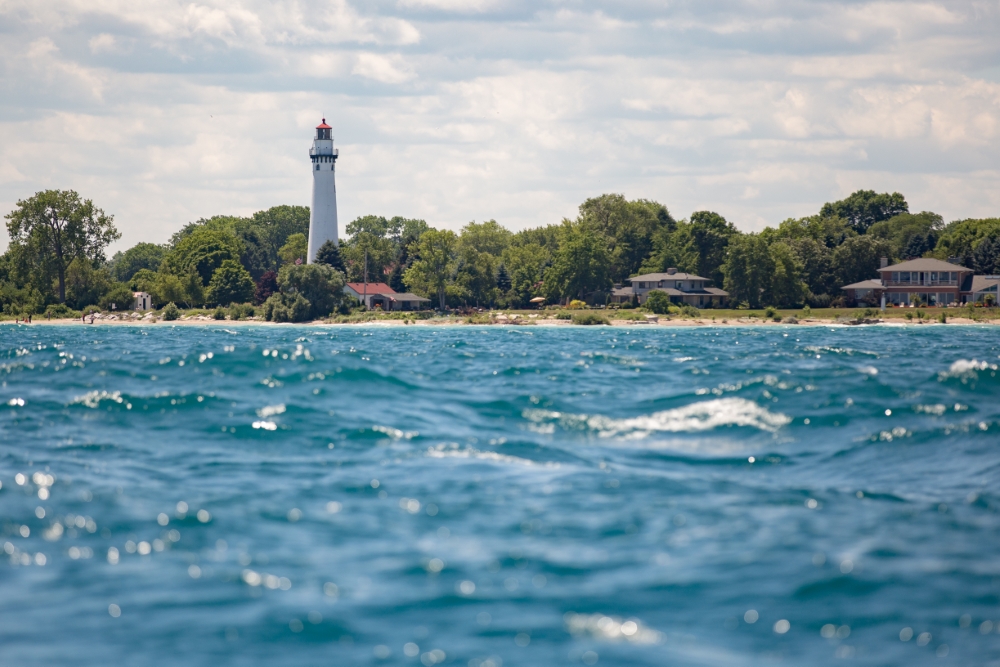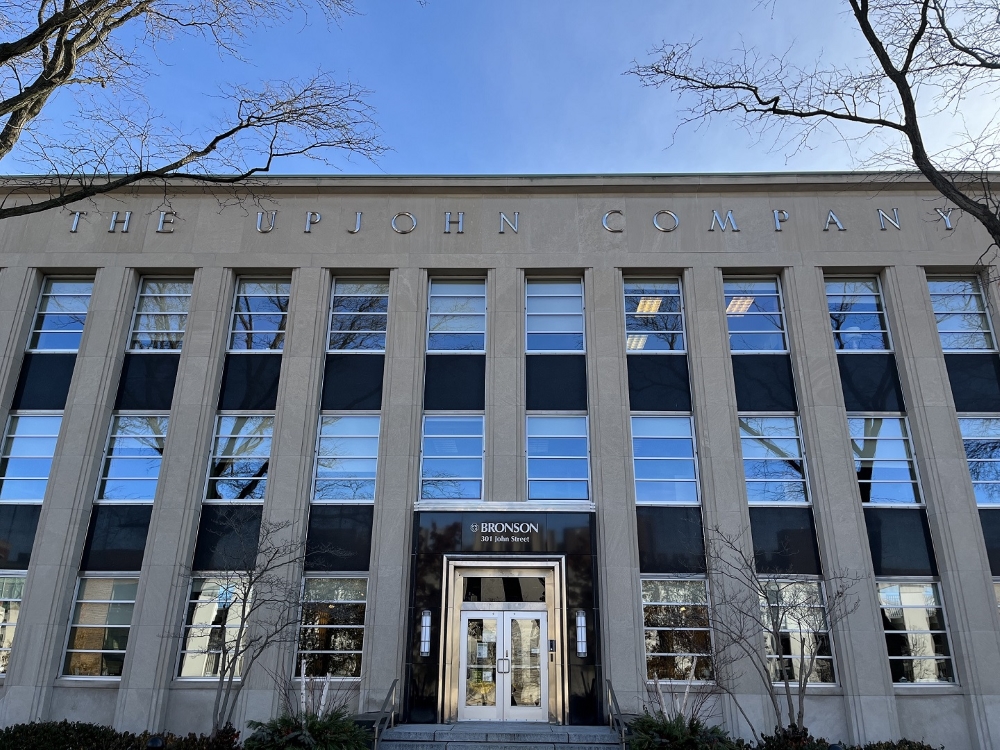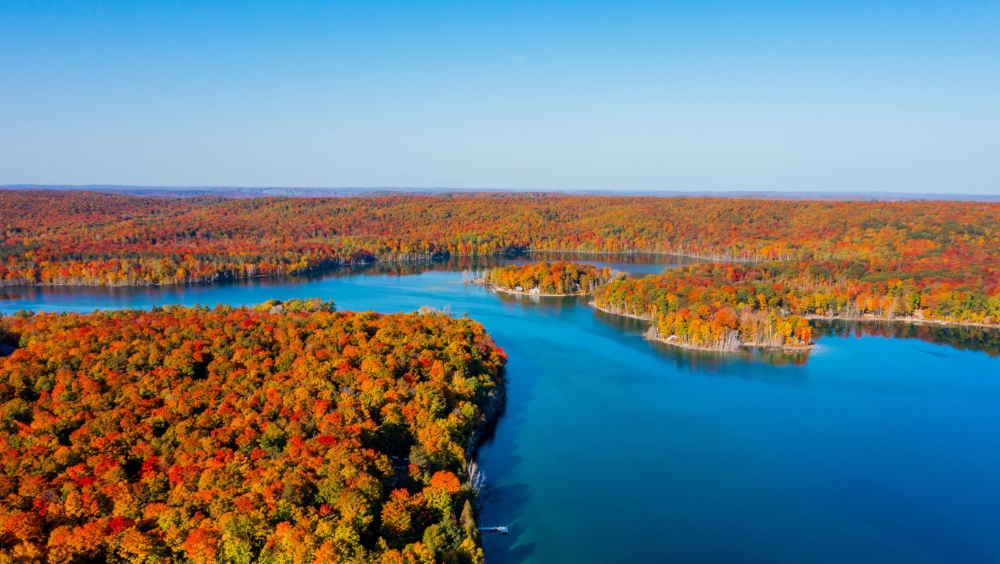The region’s challenges are many, but they can be overcome, say four experts.
Any roadmap to the future for the Great Lakes region of North America must begin by taking an honest assessment of where this resource-rich place fits into the global economy.
For all of its competitive advantages — the largest concentration of freshwater on earth; abundant supplies of energy; large tracts of land available for development; world-class research universities churning out talented graduates in huge numbers each year; spectacular scenery and outdoor recreation; central location in North America; best-in-class transportation and logistics networks connected to global ports in every mode of transport; and an affordable cost of living — the eight states and two provinces in this region face some prevailing headwinds that must be addressed.
To better understand these issues, we turned to several experts: Phil Schneider, principal of Global Location Strategies; Ernie Goss, professor of economics at Creighton University; Helena Volzer, senior source water policy manager at the Alliance for the Great Lakes; and Tracey Hyatt Bosman, managing director, Biggins Lacy Shapiro & Co.
Here are their perspectives on the challenges facing the Great Lakes and some recommended remedies.

Lake Michigan Shoreline at Kohler – Andrae State Park
Photo courtesy of Travel Wisconsin
Phil Schneider, Principal, Global Location Strategies:

As principal at Greenville, South Carolina-based Global Location Strategies, Schneider brings over 35 years of experience in global location strategy, site selection, incentives negotiation and economic development. He has advised leading companies such as Google, Apple, Toyota and Johnson & Johnson, completing more than 400 projects across industries including manufacturing, technology, R&D and shared services. Based in Wisconsin, he is considered an expert in location strategy and is extremely knowledgeable on economic conditions in the Great Lakes region.
His work spans the U.S. and international markets, supporting both corporate clients and investment promotion agencies worldwide. A past president and chairman of the Site Selectors Guild, Schneider is widely regarded as a thought leader in his field.
When I asked him to identify the most pressing issues impacting the Great Lakes region, here is what he had to say: “Each Great Lakes state, of course, has its own unique set of economic and political policy issues, but given their relatively similar economies, many of those key issues are similar. Although not limited to the Great Lakes region, some shared regional policy concerns directly related to economic development include:
- Threats to economic growth, particularly in agriculture and manufacturing, caused by high tariffs and new labor immigration policies.
- Need for hundreds of billions of dollars in infrastructure improvements, including roads, bridges, utility systems, and public transit.
- Increasing skilled workforce shortages, now exacerbated by strict immigration policies.
- Health care: rising costs, limited access — especially in more rural areas — and shortages of medical personnel.
- Rising cost of living driven by steadily increasing housing, health-care and utility costs.
- Changing state and federal education policies eroding funding and eliminating teacher positions.”
Schneider added that “the Great Lakes states share critical policy issues related to the waters of the region, and related, likely future negative impacts of climate change. Given their uniquely abundant water resources, the Great Lakes states are beginning to prepare for increased demands on freshwater resources from industries, tourists and residents, both existing and those likely to relocate to the region in the future to access those water resources. And with climate change driving not only warmer weather, but also more intense rains and floods, droughts, fluctuating lake and river levels, the region’s policy makers are looking at longer-term policies to build environmental and infrastructure resilience.”
Finally, he said: “Other shared regional water policy issues include an aging water infrastructure, requiring billions of dollars to modernize and maintain, the impact of water pollution [agricultural, residential, commercial] on regional water resources and the negative effect of invasive water species. Add to that, across the region, the ever-rising water demands from mega data centers and metals mining is increasing pressure on regional water resources, prompting calls for better industrial water policy and planning.”
Helena Volzer, Senior Source Water Policy Manager, Alliance for the Great Lakes:

The following perspective by Volzer is an excerpt of a guest column she authored for Site Selection in May 2025 on the impact of data centers on the Great Lakes region.
Generating electricity to meet data centers’ needs via coal, natural gas or nuclear-fired power plants requires water. Some refer to this relationship between water and energy generation as part of the “water-energy nexus.” Per the Great Lakes Regional Water Use Database, 70% of Great Lakes’ reported water use in 2023 was associated with generating electrical power. That’s overall water use (not the percentage of consumptive use), and that percentage generally matches each state’s water use as well. Because the electric utility is the entity that reports its water use and corresponding consumptive use to the database, we don’t have a clear understanding of what the total water footprint of an individual data center or the data center industry is.
New research shows that it’s taken just four years for the total capacity of hyperscale data centers (megawatts of load a data center can handle) to double, while both the number of facilities and average capacity rapidly climb. To meet the demand on existing power grids, states will have to add capacity while also meeting state renewable energy targets. In some states, that may necessitate reactivating or expanding nuclear power plants. That’s already happening in Michigan (Palisades), New York (Three Mile Island), and Ontario (Bruce). In others like Ohio, it’s driving the construction of new natural gas plants. The corresponding increase in the cumulative use of water by data centers — both in their indirect energy needs and direct cooling needs — must be better quantified and understood.
States should be examining all large-scale water uses of groundwater, including for data centers, to determine whether they’re appropriate in a given watershed or basin and whether those uses pose enough of a threat to other nearby watersheds that the use should be avoided altogether. As climate change continues to dramatically alter precipitation patterns, laws will need to change and adapt in concert to ensure there’s enough water to support economic development and protect our most precious shared freshwater resource, the Great Lakes.
Ernie Goss, Professor of Economics, Creighton University:

WHAT ARE SOME INDUSTRIES IN THE GREAT LAKES REGION THAT ARE BEING IMPACTED BY THE NEW U.S. TRADE TARIFFS IMPOSED ON GOODS COMING FROM CANADA AND VICE VERSA?
GOSS: Agriculture and ag-connected businesses like ethanol in Minnesota and Illinois; agricultural equipment manufacturing; dairy farming in places like Wisconsin that sell a lot of dairy products to Canada; medical equipment makers and life science companies.
ARE OTHER INDUSTRIES RESURGENT IN THIS REGION?
GOSS: Yes. Steel and autoworkers are showing increases in productivity.
WHAT ARE THE MAJOR HEADWINDS?
GOSS: There are higher costs are in the U.S., and it is still cheaper to make goods abroad. Second is population. Growth has not been strong in the Great Lakes. Third, trade stands out. Those states and provinces do a lot of the trade with other countries. They ship out through the Great Lakes and the Mississippi River. Trade is important. A piece of automotive equipment can make five or six trips across the Canadian-U.S. border. That is also linked to the value of the dollar. The value of the dollar is linked to the fortunes of those states. Manufacturing and farming are the two biggest sectors affected by the value of a dollar. They want a weak dollar. The weakening of the dollar this year has helped. It happened at a good time. But on the downside, the manufacturing sector in the U.S. has lost almost 1% of its jobs over the past year.
ANY ADVICE FOR GOVERNORS AND PREMIERS?
GOSS: Pay attention to the U.S. budget deficit running up to $2 trillion to $3 trillion this year — that undermines the value of the dollar. That results in the reverse flow of capital. We buy European goods, and they have our dollars. Capital flows are very important.
DOES THAT CAUSE INFLATION?
GOSS: Yes, in some ways, but they may deal with it via Quantitative Easing by the Fed [meeting today in Jackson Hole, Wyoming]. The President has called for lower interest rates. They will probably come down short-term in September. (The Fed lowered the interest rate by 0.25% in September — Ed.)

Photo courtesy of Travel Wisconsin

The Upjohn Company Building in Kalamazoo, Michigan, originally built in the 1930s, is today owned and operaated by Bronson Hosptal.
Photo courtesy of Michigan Economic Development Corporation
Tracey Hyatt Bosman, Managing Director, Biggins Lacy Shapiro & Co.:

“At a national level, tariffs. Tariffs are affecting all states, but those areas that “make things” are more heavily impacted. Some companies are looking to establish new capacity in the U.S. due to tariffs; others are finding themselves unable to move forward due to capex shortages created by trying to cover tariffs burdens in the short-term, and many more are taking a conservative wait-and-see approach, hoping there will be greater visibility to economic conditions in the future. The Great Lakes, as a region that ‘makes things’ is feeling all of these impacts.
“The environmental health of the lakes themselves is important to the region’s economic success. This includes addressing biodiversity issues and invasive species, the integrity of oil pipelines under the lakes, and protecting water quality overall. This is important not only for the quality of life in the region, but also for the myriad of companies (particularly food and beverage) that are drawn to and rely on the availability and quality of the water.
“Energy policy: The auto industry is obviously responsive to EV policies, whether an administration is encouraging or discouraging investment in EVs. Given the concentration of automotive production and assembly in the Great Lakes region, current policy has an impact on local industry.”

